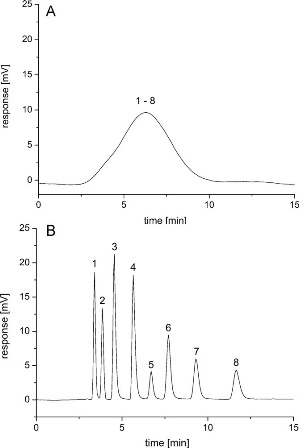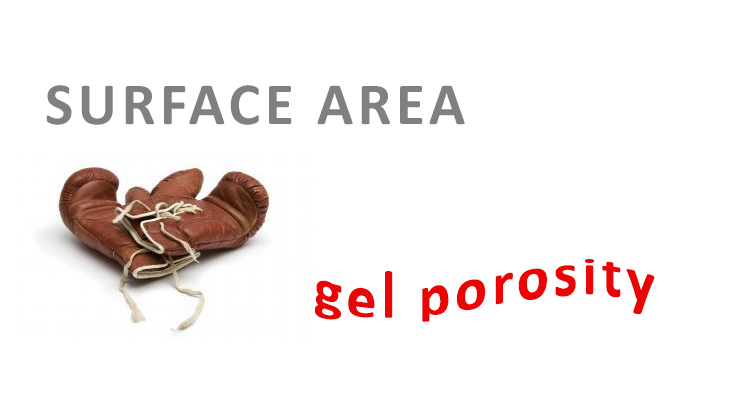Generally, methacrylic acid is used as a charge-bearing agent for generation of electroosmotic flow in capillary electrochromatography. However, methacrylic acid has a significant effect on the morphology of the monolithic stationary phases based on styrene – divinylbenzene system as showed recently by group in Prague.
The monolithic material prepared without methacrylic acid in the polymerization mixture showed a very low surface area of 0.1 m2/g, whereas the surface area of organic polymer monolith with methacrylic acid increased significantly up to 261 m2/g. The addition of methacrylic acid in to the polymerization mixture improves also separation power of prepared monolithic columns. Figure 1 shows the separation of the mixture of small molecules on the column without (A) and with (B) methacrylic acid in the polymerization mixture.

Surface area vs. Gel porosity
My question is, which property is responsible for the separation of small molecules on the organic polymer-based monoliths? Is it surface area, as showed in discussed article or in our work concerning the hypercrosslinked materials with very high surface area? Or is it the gel porosity as suggested by Ivo Nischang? He has showed that monolithic material with very low surface area is capable of the separation of small molecules and thus the gel porosity (and pore accessibility) is probably the reason of high efficiency and good separation of small molecules.
Or is the combination of both? The pore size and its distribution? The pore accessibility? The swelling of monolith? There are still questions in the air.
The one method which might help to shine more light on this question is the inverse size-exclusion chromatography. This technique is more than suitable for the analysis of porous properties of (monolithic) stationary phases in the range of interest – micro and mesopores with size lower than 50 nm. The pore size and distribution in swollen state (in the presence of mobile phase) will be probably the most important parameter.
Maybe in the future there will be such study with more information.
What is your opinion?
Figure credit: freeimages.com

One reply on “Separation of small molecules: surface area vs. gel porosity”
[…] to increase their surface area either by hypercrosslinking modification or with the combination of non-polar and polar monomers. Another possibility is to prepare low-surface area (but efficient) materials by the termination […]